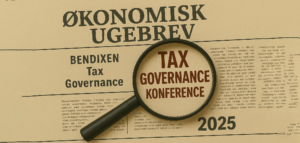EU Parlementet har udsendt en pressemedelelse om den netop vedtagede taxonomi om bæredygtige investeringer. Heri formuleres de grundlæggende rammer for det nye regler. EU Parlementet skriver bl.a., at “taxonomiforordning” bestemmer, at følgende miljømål skal overvejes, når man vurderer, hvor bæredygtig en økonomisk aktivitet er: bekæmpelse og tilpasning af klimaændringer; bæredygtig anvendelse og beskyttelse af vandressourcer og havressourcer; overgang til en cirkulær økonomi, herunder affaldsforebyggelse og øget optagelse af sekundære råvarer; forebyggelse og bekæmpelse af forurening; og beskyttelse og gendannelse af biodiversitet og økosystemer.
Endvidere skriver Parlementet:
“The taxonomy for sustainable investment is probably the most important development for finance since accounting. It will be a game changer in the fight against climate change”, said lead negotiator for the Environment Committee, Sirpa Pietikainen (EPP, FI). “I am satisfied that we reached a balanced agreement with Council, but this is only the beginning. Greening the financial sector is a first step to make investments flow in the right direction, so it serves the transition to a carbon neutral economy”, she added.
“All financial products which claim to be sustainable will have to prove it following strict and ambitious EU criteria. The compromise also includes a clear mandate for the Commission to start working on defining environmentally harmful activities at a later stage. Phasing out those activities and investments is indeed as important to achieve climate-neutrality as supporting decarbonised activities”, said Economic Affairs Committee rapporteur Bas Eickhout (Greens/EFA, NL).
How it works
An economic activity should contribute towards one or more of the above objectives and not significantly harm any of them, says the agreement. Its environmental sustainability should be measured using a unified classification system, as national labels based on different criteria make it difficult for investors to compare green investment, thus discouraging them from investing across borders.
The text does not preclude or blacklist any specific technologies or sectors from green activities, apart from solid fossil fuels, such as coal or lignite. Gas, and nuclear energy production are not explicitly excluded from the regulation, however. These activities can potentially be labelled as an enabling or transitional activity in full respect of the “do not significant harm” principle.
The new legislation should also protect investors from risks of ‘greenwashing’ as it makes it compulsory to provide a detailed description of how the investment meets the environmental objectives.
Transition and enabling activities
The taxonomy criteria should also ensure that transition activities necessary to become a climate-neutral economy, but which are themselves incompatible with climate neutrality, should have greenhouse gas emissions levels corresponding to the best performance in the sector or industry. Transition activities should neither hamper the development of low-carbon activities nor contribute to carbon intensive lock-in effects, says the text.
A similar rule will apply to activities that directly enable a sector to improve its environmental performance (such as manufacturing wind turbines for electricity production).
Next steps
The agreement reached by the EP negotiating team will have to be approved first by the two committees involved and by a plenary vote. The Commission will regularly update the technical screening criteria for the transition and enabling activities. By 31 December 2021, it should review the screening criteria and define criteria for when an activity has a significant negative impact on sustainability.
Background
The Taxonomy regulation should enable investors to identify environmentally sustainable economic activities that substantially contribute to climate change mitigation, based on scientific evidence, including evidence from existing life cycle assessments (production, use, end of life and recycling), environmental impacts and long-term risks.




